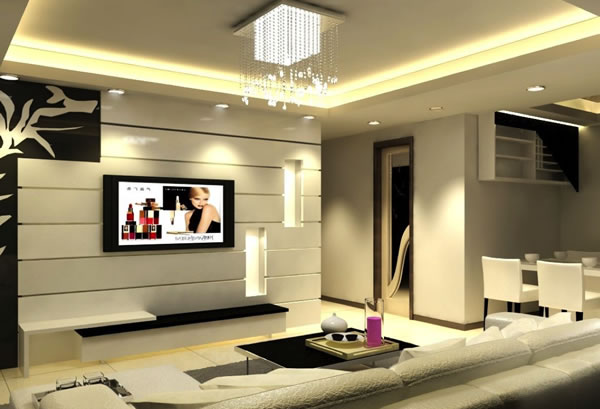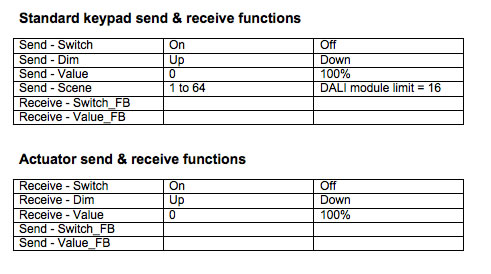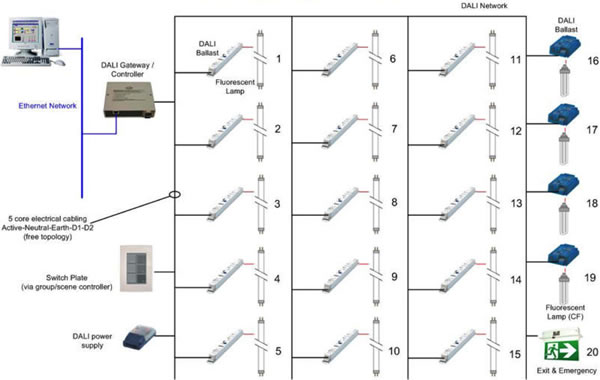 By Simon Buddle, Future Ready Homes.
By Simon Buddle, Future Ready Homes.
Did you see the strawberry full moon on the summer solstice? A full moon on the solstice only comes around once or twice in a life time – the last time it happened was in 1967. The summer solstice marks the beginning of summer, but in the northern hemisphere, this is not the season for scene-setting lights.

A room that is lit well with correctly-setup lighting levels for task and accent lighting, can turn a great room into a stunning room, but who wants to wait until 9.30pm at the customer’s home to begin the task of tweaking each circuit’s level one by one, under instruction from the lighting designer? Sometimes it has to be done. but it should ideally be considered a winter activity, like skiing and Christmas jumpers.

Typical Scenes
The fundamental requirement for a scene is to set different lights at differing brightness levels. A room may have a number of scenes and some areas may have scenes that change based upon time of day, light levels or occupancy. As a broad generalisation though, typically, a room will require between three and five scenes to provide the resident with the various moods or feels they wish to have.
There is often a need for global scenes too, such as ‘welcome home’, ‘away’, ‘evening’ and ‘entertain’. The requirements for scenes in the home are many and varied.
The Advantages of DALI
Dimming has moved on a long way from the old days of incandescent lamp phase dimming, and that’s a good thing. Today’s modern lighting designer employs any number of dimming methods; 0-10V, phase, DMX and DALI are all regularly deployed in the residential market. Sadly, there is an issue here, so please forgive me having a bit of a moan at manufacturers.

The DALI protocol as per its specification, allows for 16 scenes on any one DALI loop. One of the great advantages of DALI is, of course, the amount of luminaires one can put onto a single loop, namely 64. That makes DALI a very attractive proposition in the home. Add to that some of the emergency lighting features, status reporting and significant cost saving, and it’s easy to see why DALI is rapidly being adopted by the market.

Limitations of DALI
In residential terms, 64 luminaires is quite a lot, and those light fittings are likely to span a number of rooms – even if there were ten per room, you’re still talking about six rooms or more. And herein lies the problem. If we want four scenes per room, we can’t really do it with a DALI controller because there are only sixteen scenes available as part of the DALI protocol.

There are a couple of ways around it. One involves a central processor or logic module that receives button pushes and converts them into light level values per channel. The other is to create some imaginative programming to solve it. Either of these choices do two things: add cost and remove simplicity.
A Plea to KNX Manufacturers
The question I would like to ask KNX manufacturers is, ‘Why haven’t you implemented a software interface between your products and the DALI communications protocol that provides for more than the sixteen scenes?’ Lutron made this a priority when it designed its DALI module. The DALI scene limitation is a hindrance to everyone in the residential space who is trying to work to a budget.
When you add to this the limitation that some manufacturers only allow for eight scenes in their 0-10V module and those scenes have to be numbered one to eight only, we have the potential for quite a large can of worms for our intrepid programmer to pick their way through.
I have made my feelings clear to a couple of product managers at two of the larger KNX manufacturers, who both hid behind the line, ‘But that’s the limitation of the DALI protocol’. Lighting designers and clients don’t really care how the aesthetic is created, but they do care how much it costs. So if we have to add in some form of logic device just to facilitate scene setting, then we have negated two of the fundamental reasons to buy KNX, namely value and decentralised intelligence.
Conclusion
Sorry, I’m feeling somewhat militant today, given the outcome of the UK referendum, so I shall turn to ‘Citizen Smith’ and stand on his soap box to say, ‘We, the installers, are the ones that have to justify the extra cost in conversations with our customers. We are the ones that have to put in the extra hours to create the scenes and all of the associated logic. We, the workers, deserve to have our grievances heard!’
At the very least, a manufacturer should ensure that all of their lighting actuators are capable of the same set of functions. They are, after all, ultimately all doing the same thing: dimming lamps up or down. Is it really that much to ask for?
DALI2 remains locked in a commercial argument. Let’s hope that they resolve it soon and this problem is addressed within it. Until then, we’ll keep looking over at other lighting control system programmers with a slight sense of envy – if, of course, they haven’t finished their scene setting and gone home a long time ago.
Simon Buddle is a consultant for Future Ready Homes, a specialist in BMS and ELV services system design. Simon is also a regular contributor to KNXtoday magazine.













